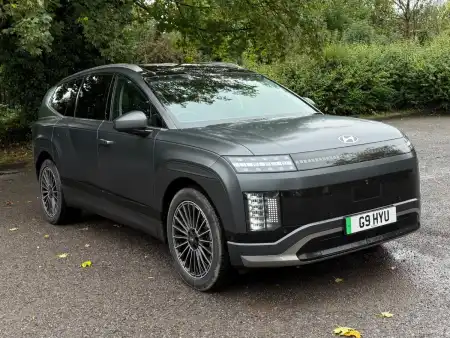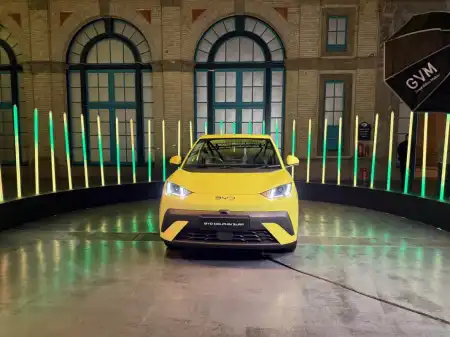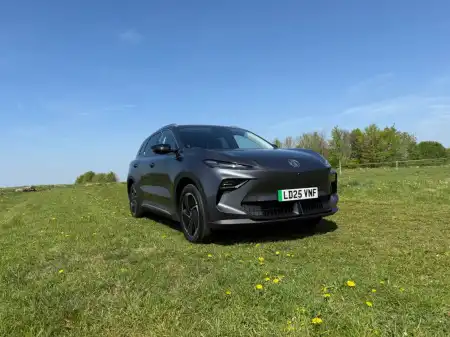- Superb performance in dual-motor variants
- Lovely, sophisticated interior
- Decent range
- The rear has less space than its rivals
- The performance version rides too firmly
- Most safety tech is an optional extra
Introduction
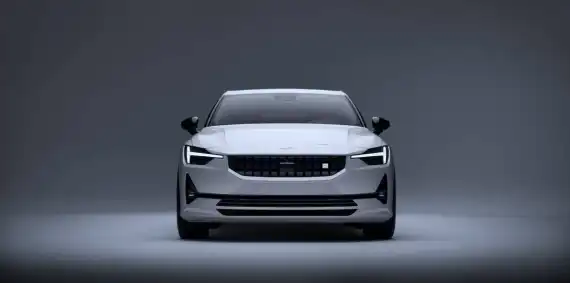
Polestar may not be a brand you’re familiar with, but you shouldn’t turn your nose up at it. Why? You could argue it's an all-electric Volvo with a different badge.
Volvo is a highly sought-after brand with its own range of electric cars called Recharge. Still, Polestar’s had a partnership with Volvo dating back to the mid-1990s before being fully acquired by the Swedish manufacturer in 2015.
The Polestar 2 is based on the Volvo C40 and CX40 platform.
Unsurprisingly, it's aiming to take on Tesla, although, of course, the electric car market is diversifying at quite a rate of knots nowadays.
It is a direct rival to the Model 3, and it's also intended to represent a performance brand.
It is telling that the Polestar 2 is branded as a ‘fastback’ – a raked rear-end hatchback, although from the sides, you could easily mistake it for a saloon with a shallow boot.
There are no trims, but there is an option for a single motor version with front-wheel drive and two battery sizes to pick from, one called Standard Range and one called Long Range, both of which produce 231PS.
A dual-motor version with all-wheel drive provides 408PS, while a pacier variant is also offered with a Performance pack with 476PS.
Regardless of your choice, as standard, you'll get 19-inch alloys, an 11.2-inch infotainment touchscreen, a 12.3-inch digital instrument display, dual-zone climate control, heated front seats, a powered tailgate and keyless entry.
Various packs can add a Harman Kardon premium sound system, a panoramic glass sunroof, vegan-friendly upholstery, heated rear seats and some interior styling touches, LED headlights, lots of other safety technology, Brembo brakes and 20-inch alloys.
The introductory price is also reasonable for an electric car, with the entry-level Standard Range model costing little more than a basic petrol-powered BMW 3 Series.
Is that a good thing, though? Does cheap mean corner-cutting?
We aim to find out.
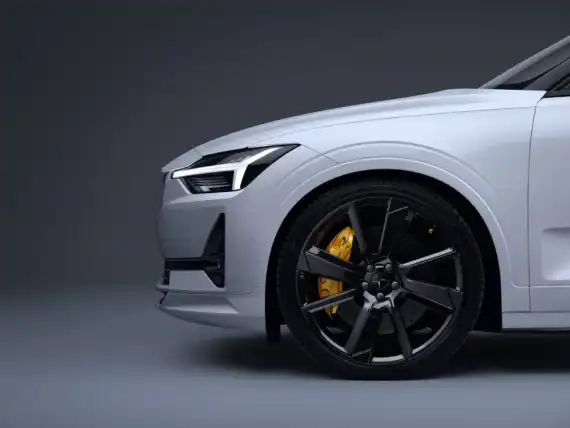
The Polestar 2 has a unique look, although it doesn't look too dissimilar to a fossil-fuelled car in the same way a Tesla does.
From some angles, you can see the outline of a Volvo in the Polestar 2. Still, it has its distinctive personality, with a shapely front end, square patterns in the grille panel and a very thin lower grille which features triangular air intakes on each side.
The car has a more familiar shape from the side, with a sizeable indentation in the bottom of the doors and a raked rear end.
The futuristic rump features a horizontal light bar across its width, along with a shapely protruding rear bumper.
Inside, the cabin looks rather minimalist, with a large portrait tablet on the centre of the dashboard next to the steering wheel and lots of burnished piano black trim.
Plenty of soft-to-the-touch materials add to the luxury, and the cabin feels polished and elegant.
The 11.0-inch infotainment screen is highly responsive, although some of the icons on the screen could be a bit bigger. But, on the whole, it's an excellent system, which Google built – and it shows.
On The Road

Handling & Performance
The single-motor version gets from 0-60mph in 7.0 seconds. That is fine, but it isn't lightning quick, something that's common in all-electric cars.
Polestar can oblige, though, dropping the time significantly to 4.5 seconds in the dual-motor variant – and it'll manage it in 4.2 seconds in the Performance version. However, that's still not as good as the Tesla Model 3 Performance.
It is an unnecessary comparison, though, as nobody 'needs' a car quicker than 4.2 seconds, or even 4.5 seconds. And if outright pace off the line is unimportant, 7.0 seconds is more than adequate.
It makes good progress, with suitable acceleration at all speeds.
If you choose the Performance edition, then you’ll get adjustable suspension. It is curious in that, to adjust it, you need to get underneath the car to turn a knob on each damper.
In our setup, it felt stable and well-planted. Still, although the Polestar 2 handles reasonably well, it isn't sporty enough to justify the need for it, plus the steering lacks the precision needed to throw it into a bend anyway.
Our main finding was that all the adjustable suspension did was make the ride excessively firm without adding much to the car's performance. It is not jarringly uncomfortable, but most of its adversaries offer superior ride comfort.
Besides, we were satisfied with the handling in the standard version, which felt reasonably tight on corner entry, limiting body lean and coping well with taking a bend at speed without having the athleticism you'd expect from more sporty cars.
Wind and road noise is alright, but the soundproofing isn’t as good as some challengers. Then again, with no engine note, it’s always more noticeable in all-electric cars.
The regenerative braking helps you put some charge back into the batteries under deceleration, but we found it a little inconsistent and difficult to get used to.
This was a common problem amongst many early all-electric cars, nearly all of which have regen-braking. But more manufacturers are gradually ironing out the problem.
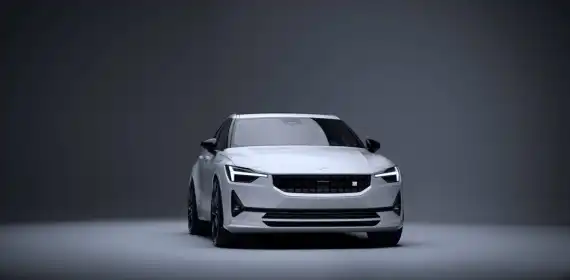
Space & Practicality
There is plenty of space in the front regarding legroom and headroom.
However, the same can’t be said of the back, especially with headroom, so taller backseat passengers will struggle to fit comfortably.
There is also a large tunnel underneath the floor, which is flat in some rivals’ cars.
Nevertheless, the seats are comfortable, and the driving position is good, while the electric seat adjustment adds to the convenience.
Visibility out of the front is good, but it’s restricted at the rear. However, parking sensors and a rear-view camera are included as standard and help mitigate the issue.
At least there’s plenty of storage space inside, especially underneath the centre console, although the door pockets could be a bit bigger.
Boot space is 405 litres, expanding to 1,095 litres with the back seats folded in a 60:40 split, in addition to 35 litres of space underneath the bonnet.
Ownership
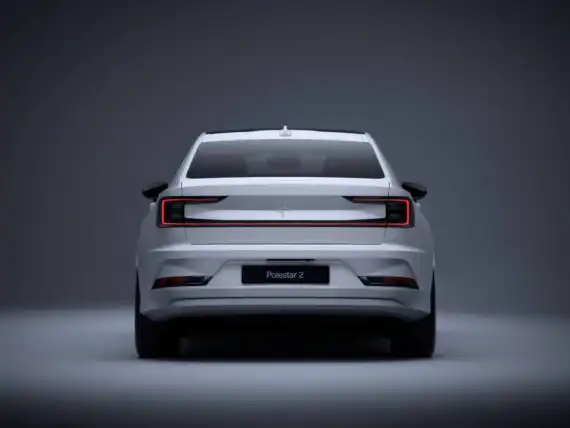
Running Costs
Being all-electric, there's no road tax to pay until 2025, which should help keep costs down.
Tax efficiency will likely be on the mind of company car users, as it'll be in the bottom band for Benefit In Kind tax.
Servicing costs should be lower than a fossil-fuelled variant.
Polestar is still a very new brand, so it often doesn't feature on reliability surveys yet. But parent company Volvo tends to be ranked above average depending on the model. It is an area where rival Tesla has struggled.
You get a three-year, 60,000-mile warranty with the Polestar 2.
The Standard Range single motor variant has a 69kWh battery with a 276 to 297-mile range, while Long Range variants get a 78kWh battery, increasing the capacity to 320 to 341 miles in the single motor. However, this drops to 282 to 301 miles with both dual-motor variants.
Charging speeds aren’t the quickest, with the Standard Range able to top-up at 130kW, increasing to 155kW for the Long Range models.
That means a 10-80% top-up takes around half an hour, while a full 0-100% charge using a 7.4kW home wall box will take about ten or eleven hours.
Verdict
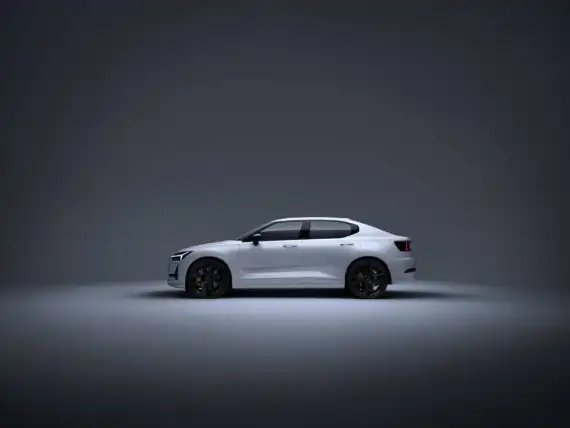
Overall, the Polestar 2 is commendable, boasting interesting looks, a sophisticated interior and superb performance, especially in the dual-motor versions.
The handling is decent but not sporty, while the Performance version makes the ride excessively firm. Moreover, we can't imagine the average Polestar owner will want to get underneath their car to adjust the suspension settings manually.
Rivals offer better space in the rear, and although it’s rated highly on safety, most of the clever tech is an optional extra.
Nevertheless, it's, without a doubt, a viable and worthy competitor to the Tesla Model 3 or any other electric car out there.

